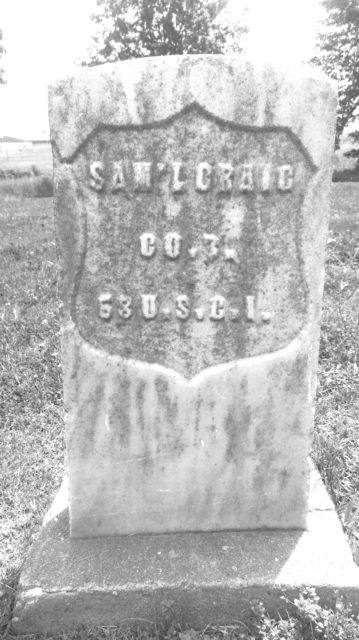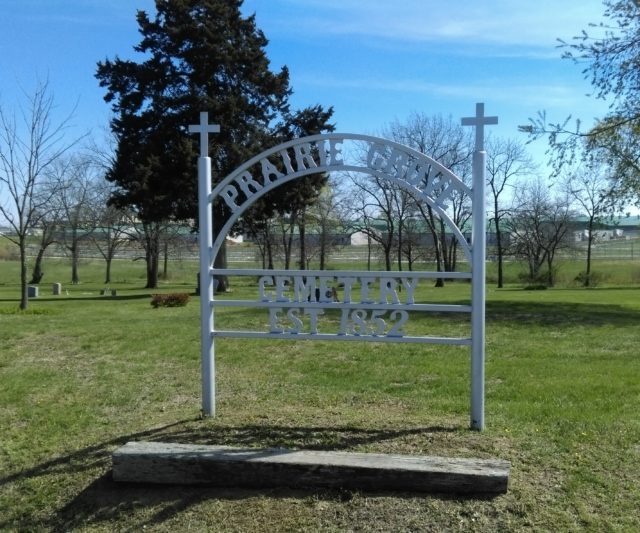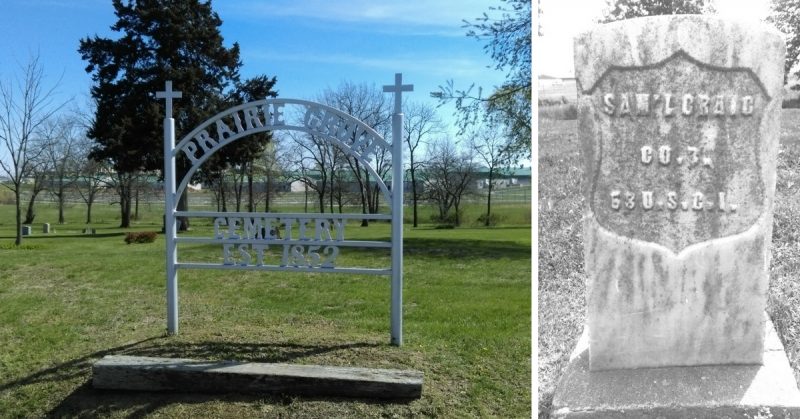War History online proudly presents this Guest Piece from Jeremy P. Ämick, who is a military historian and writes on behalf of the Silver Star Families of America.
Peacefully situated on a small wooded lot between the Tipton Correctional Center and a gravel road on the northern end of Tipton, Mo., the Prairie Grove Cemetery draws little notice. But within the confines of this hallowed piece of ground are buried the stories of former slaves who donned the uniforms of Union soldiers during the Civil War and went on to fight for freedoms they had themselves been denied.
The Moniteau County Historical Society notes that the cemetery was formerly listed as the Tipton Colored Cemetery in the “Moniteau County Cemetery Book” and, of the estimated 250 burials that have taken place, many of the graves remain unmarked.
“I was the caretaker there for several years,” said James Shipley, a lifelong resident of Tipton. “Years ago, me and my brother worked to clear off a bunch of trees and brush that had basically taken over most of the cemetery.”
Among the various headstones still standing—some marked and others whose lettering time has worn away—one may notice the many near-faded inscriptions of a name and the “U.S.C.I.” designation, represesenting the Civil War service in the United States Colored Infantry of the person buried beneath.
According to the 2000 edition of the “Moniteau County Missouri History” book, at the beginning of the Civil War in 1861, of the county’s “population of 9,370 there were 720 slaves and 2 Freedmen.” The lives of many of these Missouri slaves were forever changed in mid-November 1863 when General John M. Scholfield, commander of the Union forces of the Department of Missouri, issued General Order 135.
The order provided the authorization for the “immediate enlistment of slaves, regardless of owners’ loyalty or consent (with promise of compensation to loyal masters),” as written in the book “Freedom: A Documentary History of Emancipation, 1861-1867.” Many of these slaves were then placed in regiments of the colored infantry and sent to fight a war often far from their Mid-Missouri homes.

The enduring impact of this military recruiting initiative is still evident through the names of the soldiers interred in Prairie Grove Cemetery, such as that of Samuel Craig, listed as having served with Company B, 68th U.S.C.I.
In viewing the “Descriptive Recruitment Lists of Volunteers for the United States Colored Troops for the State of Missouri, 1863-1865,” we discover that his former master, Joseph Craig, signed his 26-year-old slave into Union service at Tipton on February 26, 1864.
Details of his military experience gain clarity through a muster roll (accessible through the Missouri State Archives), which notes he was sent to St. Louis and entered service on March 8, 1864 at Benton Barracks—a former military encampment where soldiers battled the deadly enemy of diseases such as small pox, measles and meningitis.
Initially designated the 4th Missouri Colored Infantry, Craig’s regiment became the 68th U.S.C.I. on March 11, 1864, thus commencing a history of service that has been well-chronicled by historians; beginning with several months in defense of Memphis, Tenn., and moving forth to the siege and capture of Fort Blakely, Ala., in the spring of 1865 .
The battle-hardened soldiers of the regiment spent the latter part of their enlistment at various points in Texas unit mustering out of the service at Camp Parapet in Louisiana on February 5, 1866.
Records pertaining to Craig’s life after the war are rather scant, but census records indicate that the veteran chose to remain in the Tipton area and went on to enjoy life as a free man—later marrying, raising several children and working as a laborer.
In 1916, the Industrial Home for Negro Girls was opened adjacent to the cemetery on the site of what has since become the Tipton Correctional Center. During its forty years of operation, Shipley noted, many of the girls who died while at the home were buried in unmarked graves in the northeast corner of the cemetery.

“When my brother and I started taking care of the cemetery, that was one of the areas that was all grown over with brush and weeds,” said Shipley, discussing where the young girls are buried. “I don’t recall there ever being any stones in that section (to mark the graves),” he added.
Though many unadorned granite markers mark the final resting spot of other black Civil War veterans such as George Washington of the 65th U.S.C.I.—one of the regiments that raised the funds to establish what is Lincoln University—steps have been taken in recent years to ensure the preservation of the memory of these soldiers’ sacrifices.
“Many years ago, Prairie Grove (Baptist) Church took over the cemetery,” said Shipley, describing a local congregation that was founded by former slaves after the Civil War. “The congregation wanted to be sure that it was in the church’s name so that there would always be someone around to take care of it.”
Shipley, who served as a mechanic with the famed Tuskegee Airmen during WWII, added, “I don’t know much about the Civil War veterans that are buried in this cemetery because they have all been gone for such a long time.”
He added, “But I do think it’s important that cemeteries like this are taken care of because they are a part of the community’s history and these veterans—regardless of their color—are men who wore the uniform and fought for their country … and that should never be forgotten.”
